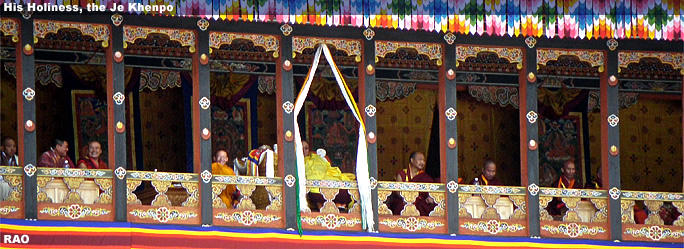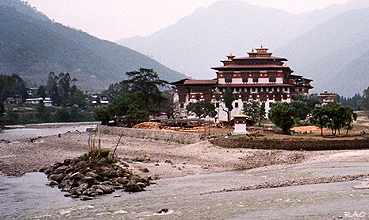| His
Holiness - The Je Khenpo |
 |
Bhutan Religion |
|
 |
Bhutan Information |
|
|
|
|
Punakha
|
 |
| Seventy
seven kilometres from Thimphu at an altitude of 1350 m lies the fertile
valley of Punakha well irrigated by the Pho Chhu and the Mo Chhu (the male
and the female rivers). With a temperate climate to add to that the valley
produces crops and fruits in abundance.
The
old capital of Bhutan till 1955 it is the winter residence for the Je
Khenpo, the Chief Abbot of Bhutan. On the way from Thimphu to Punakha,
splendid views of the Himalayas can be had at the Dochula Pass. |
|
Punakha
Dzong is home to the central monk body and the Je Khenpo (spiritual
leader) during the winter months. Punakha's climate and warmer temperatures
make its valley one of the most fertile in Bhutan.
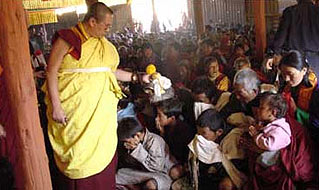 |
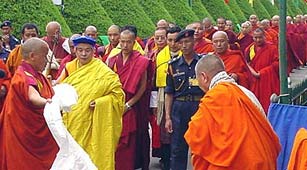 |
| The Je
Khenpo |
The Je
Khenpo followed by the monk body
arriving
at Tashichhodzong, Thimphu |
top
|
History
|
 |
| Tashichhodzong:
built in 1641 by Shabdrung Ngawang Namgyal and reconstructed in 1961, by
the Late King, His Majesty, King Jigme Dorji Wangchuck, Tashichhodzong
(fortress of the glorious religion) houses the main secretariat building,
throne room of His Majesty the King of Bhutan. During the warmer summer
months the monk body headed by His Holiness, the Je Khenpo, makes
its home in the dzong. |
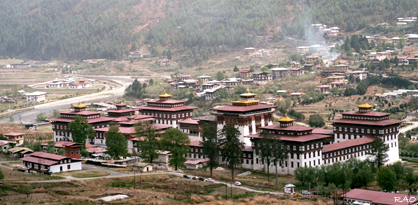 |
|
Tashichhodzong
|
|
During
the 17th century the head of the Drukpa school Ralung monastery, Zhabdrung
Ngawang Namgyel, the first unifier of Bhutan came to power. After defeating
the five Tibetan dynasties and gaining control of Western Bhutan, the remainder
of the country was unified under the system he set up before his death.
Under this system of there was a joint religious ruler (the Je
Khenpo) and regent (the Desi) under the ultimate authority of the Zhabdrung and his subsequent incarnations. The country was divided into three provinces
each under a Penlop, with the local dzongs governed by dzongpens. This
theocratic system of government, with a legal code based on Buddhist principals,
continued until 1907.
| Information on Bhutan |
 |
|



